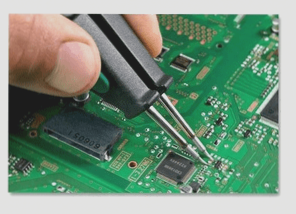Differences Between 2-Layer PCB and 4-Layer PCB
- 2-layer and 4-layer PCBs are widely used in various devices and prototypes due to their simplicity, relevance, and cost-effectiveness.
- 4-layer PCBs offer better signal integrity and less interference compared to 2-layer PCBs.
- 2-layer PCBs are cost-effective and lightweight but may struggle with interference issues.
- Understanding the variances between these two PCB types can help in choosing the right one for specific needs.
Things to know between 2- and 4-layer PCBs
- 2-layer PCBs provide easier usability, better conduction, and simple support.
- It’s essential to compare 2-layer and 4-layer PCBs on various aspects to make an informed decision.
Comparing 2-and 4-layers PCBs based on Stackups
- 2-layer PCBs have a straightforward design with a single copper layer for signal conduction.
- 4-layer PCBs consist of an FR4 or glass core with prepreg sheets and copper layers stacked up elaborately.
- The stackup of a 4-layer PCB includes copper layers, prepreg sheets, and inner layers with specific thicknesses.
- Interconnections in 4-layer PCBs are achieved through the soldering process on the outermost copper layers.
Comparison Between 2-Layer and 4-Layer PCBs
- Design:
- Functionality:
- Cost Factor:
- Prototyping:
When it comes to design, the 4-layer PCB is more intricate than the 2-layer PCB. A 2-layer PCB provides double the surface area for conductor patterns compared to a single layer PCB. On the other hand, a 4-layer PCB offers even more space due to its additional layers. The complexity of a 4-layer PCB design involves prepregs that enhance insulation with a dielectric constant of 4.2.
The 2-layer PCB shows no propagation delay and simplifies the creation of microstrip traces. In contrast, a 4-layer PCB may encounter impedance issues and propagation delays due to its multiple layers. However, the 4-layer PCB provides better insulation and heat resistance, making it suitable for devices requiring prolonged usage.
Creating a 4-layer PCB demands higher expertise and experience, leading to higher costs compared to a 2-layer PCB. The added expense is justified by the enhanced performance, signal integrity, and reduced interference offered by the 4-layer PCB.
Prototyping for both 2-layer and 4-layer PCBs has been streamlined with software like Gerber, making the process efficient and automated. Outsourcing PCB prototyping to professional experts ensures timely and error-free prototype development, regardless of the PCB type required.
Choosing Between 2-Layer PCB and 4-Layer PCB: What’s the Best Option?
- Maximum Functionality in Limited Space: When designing devices with limited space, opt for a 4-layer PCB to accommodate more functionality in a smaller size.
- Complex Functionality Needs: For devices requiring complex functions, a 4-layer PCB offers better support and innovation.
- Enhanced Durability: Devices with 4-layer PCBs have a longer shelf life and robust performance, ensuring durability.
- Affordability Consideration: To control costs, choose a 2-layer PCB for budget-friendly device development.
- Rapid Development Requirement: When time is of the essence, opt for a 2-layer PCB for quicker device rollout due to simpler design.
Factors like operation frequency, signal flow design, and density requirements also play a crucial role in deciding between a 2-layer PCB and a 4-layer PCB.
Summing Up
2-layer and 4-layer PCBs vary in design complexity, thickness, and development time. While 4-layer PCBs may be costlier due to their complexity, they offer more functionalities in devices. Both types perform well in prototype development, leveraging software and professional design services.
For more insights, check out PCB assembly cost details.


